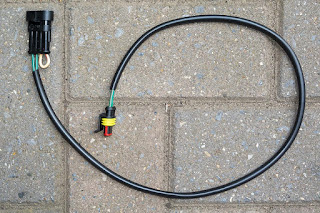This morning the DHC was presented at a friend’s
workshop for her biennial safety and environmental inspection (or APK as it is
called here). Most important (for me that is) part of the inspection were the
readings from the brake test and the emissions test.
To start with the brakes. With the readings [N]
shown above (left to right Front, Rear, Handbrake), it was a clear pass. But I
am still not really happy with how they perform. Maybe I am just spoiled because
my two other cars (‘t Kreng and a late Land Rover Defender) both have discs all
round. And as such have a much better pedal feel. Especially when compared to a
40 year old front-disc and rear-drum set up!
The emissions test was a fail, though that didn’t
come as a surprise. The workshop owner guessed that already, during my last
visit to him with this car in November last year. And he was proved to be
right: with a CO percentage of 6,17% it was slightly rich. Nothing to worry
about as it only needed adjusting both adjusting nuts by one flat to get the
readings well below the maximum of 4,5%. Another pass!
All the other checks and the general visual
inspection revealed no further problems.
So another clean sheet of health for the next 2
years. Turned out that since the previous APK the car covered nearly 7000
kilometres. Not bad considering a general lack of time and three other cars to
spent time on! Time to kill some more time with a scenic tour on the way home (including
a short photo shoot) to enjoy the fine early morning weather!










































